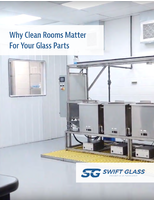Reducing Carbon Dioxide Emissions Using Oxy-Combustion Processes

Air Liquide is taking part in several large-scale research projects in Europe and in North America, testing processes that use oxygen (so-called "oxy-combustion") to minimize carbon dioxide (CO2) emissions from industry. Some of the projects also involve testing technologies that capture CO2 from the exhaust gas after combustion.
Oxy-combustion is a promising solution for reducing the intensity of CO2 emissions from
traditional industrial activities such as coal-fired power plants, blast furnaces and cement plants. Using oxygen (instead of air) for the combustion of coal or other fuels, results in exhaust gases of relatively pure CO2 that is ready for capture, storage or direct use (e.g. for enhanced oil recovery). Air Liquide provides oxygen, engineering and combustion expertise, as well as equipment for the safe and efficient handling of the oxygen used during testing.
In Europe, Air Liquide is a partner with TOTAL in the Lacq Project in southern France,
which aims to demonstrate the feasibility of CO2 capture and storage in depleted natural gas fields. The project involves the revamping of an existing 30 MW boiler, so that it can be used for oxy-combustion. In addition to providing proprietary burners for the project, Air Liquide will supply TOTALwith oxygen (some 240 tonnes per day) froman on-site unit.
In North America, at the Babcock & Wilcox Power Generation Group, Inc. (B&W PGG) Clean
Environment Development Facility in Alliance, Ohio, B&W PGG and Air Liquide
successfully operated a 30 MW unit in full oxy-combustion mode (a world record thus far). After the next phase of testing, which will use different types of coal (sub-bituminous, lignite and Powder River Basin coal) and novel plant designs, Air Liquide and B&W PGG intend to implement the technology at a larger demonstration plant where more than one million tonnes of CO2 could be captured in a single year.
Commented François Darchis, Senior Vice-President Air Liquide Group, in charge
of R&D, and member of the Executive Committee: "These partnerships demonstrate our commitment to make cleaner energy a reality. Globally, oxycombustion will become an indispensable technique for reducing CO2 emissions from coal and other fuels combustion. Air Liquide is proud to take part in research and development programs such as these. We are doing our part to help the global industrial community reduce its carbon footprint."
With nearly 40,000 employees in 72 countries, Air Liquide is a world leader in industrial and medical gases and related services. The Group offers innovative solutions based on constantly enhanced technologies and produces air gases (oxygen, nitrogen, argon and rare gases...) and many other gases including hydrogen. The Group contributes to the manufacturing of many everyday products: bubbles in sparkling beverages, protective atmospheres for packed foods, oxygen for hospitals and homecare patients, ultra-pure gases for the semiconductor industry and hydrogen to desulfurize fuels...
Air Liquide is committed to sustainable development and helps to protect life. Founded in 1902, Air Liquide has successfully developed a long-term relationship with its shareholders built on trust and transparency and guided by the principles of corporate governance. Since the publication of its first consolidated financial statements in 1971, Air Liquide has posted strong and steady earnings growth. Sales in 2006 totaled 10,949 million euros, with sales outside France accounting for almost 80%. Air Liquide is listed on the Paris stock exchange and is a component of the CAC 40 and Eurostoxx 50 indices (ISIN code FR 0000120073).




